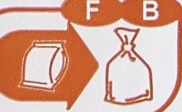Gaufrettes enrobées de chocolat au lait - Carrefour - 135 g (3 x 45 g)
Aquesta pàgina del producte no està completa. Podeu ajudar a completar-la editant-la i afegint-hi més dades a partir de les fotos ja disponibles, o fent-ne més amb l'aplicació de androide o iPhone / iPad. Gràcies!
×
Algunes de les dades d’aquest producte les ha proporcionat directament el fabricant Carrefour.
Codi de barres: 3560070988051 (EAN / EAN-13)
Nom comú: Gaufrettes croustillantes (21,5%) enrobées de chocolat au lait (78,5%).
Quantitat: 135 g (3 x 45 g)
Marques: Carrefour
Categories: Snacks, Aperitius dolços, Cacau i derivats, Llaminadures, Barretes, Galetes i pastissos, Caramels de xocolata, Galetes, Galetes de xocolata, en:Wafers, en:bars-covered-with-chocolate, en:Stuffed wafers, en:Chocolate stuffed wafers
Etiquetes, certificacions, premis:
Punt verd
Productor: Fabriqué au Pays de Galles pour DIPA - 2980 av. Julien Panchot - 66968 Perpignan Cedex 9 - France pour Interdis.
Botigues: Carrefour, carrefour.fr
Matching with your preferences
Altres dades
Altres dades: 3 x 45g Qualité contrôlée
Condicions de conservació: Conservation : A conserver à l'abri de la chaleur (entre 14°C et 19°C), de l'humidité et d'odeurs parasites. Pour une dégustation optimale, à consommer de préférence avant le : / N°lot : voir sur l'emballage.
Servei al client: Interdis - TSA 91431 - 91343 MASSY Cedex - France
Report a problem
Fonts de dades
Producte afegit per kiliweb
Última modificació de la pàgina del producte per org-carrefour.
La pàgina del producte, també editada per autorotate-bot, carrefour, chevalstar, driveoff, ecoscore-impact-estimator, musarana, openfoodfacts-contributors, yuka.UjZ3ZEhmUmRwL01raThRazRRM0Z3WXhwMmIyQ2RHaXhjZmNVSVE9PQ.












